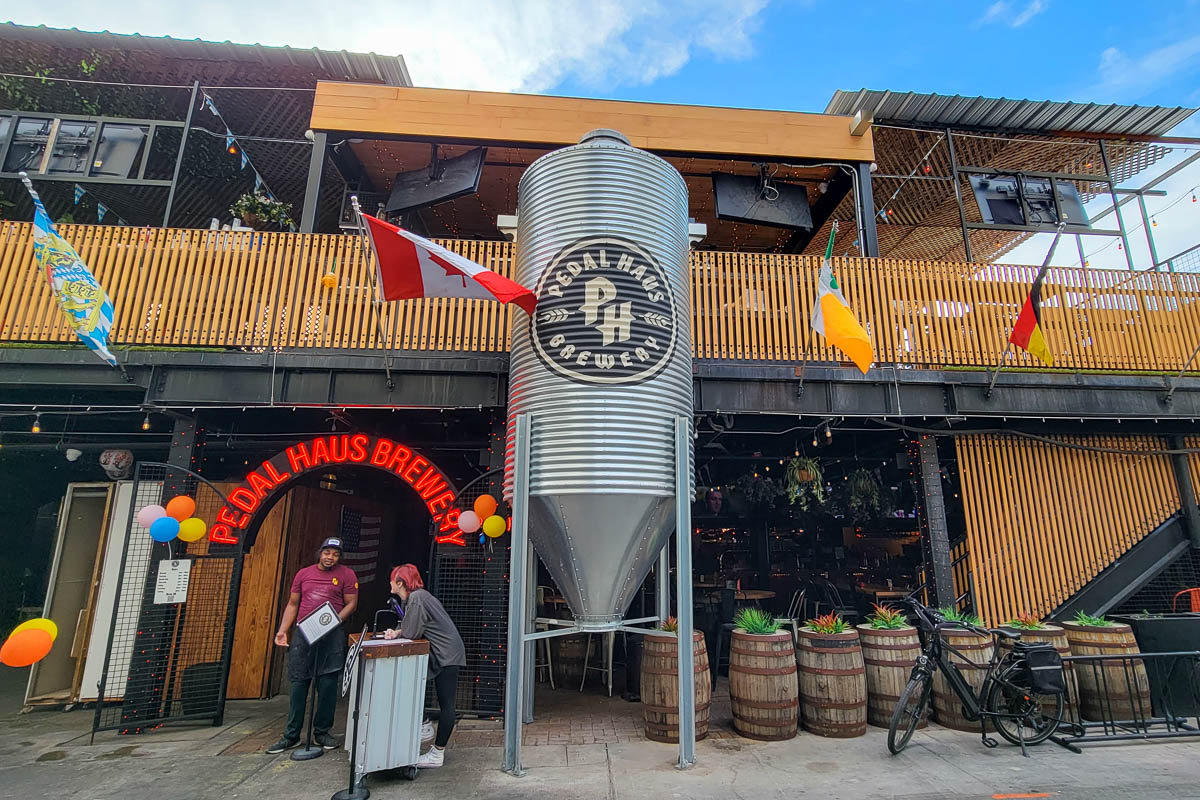Welcome to an extra stop on the Brews and Choos project.
Brewery: Pedal Haus Brewery, 214 E. Roosevelt St., Phoenix
Train line: Valley Metro Rail, Roosevelt/Central
Time from Chicago: 3½ hours by air
Distance from station: 350 m

I discovered last week that Phoenix built a light-rail system between my visits in 2015 and 2023. And it goes past a bunch of breweries. So when I had a few hours between my flight landing and the conference welcome dinner, I went to two of them.

Pedal Haus Brewery has multiple locations, including a production facility in Tempe. The downtown Phoenix location has two levels, most of which are outside. (They don't get a lot of snow or rain in central Arizona.) I found my way to the roof and ordered a flight and took notes on my phone.

I started with the Kölsch (4.7%, 19 IBU): light, crisp, honey, pear, lingering finish. Not too bad. Next, the White Rabbit wheat WCIPA (6.5%, 48.6 IBU): subtle, some fruit, much lighter than expected. On to the Desert Classic APA (5.9%, 36 IBU): malt, apple, light banana notes, very drinkable. Finally, the Haus IPA (6.4%, 58 IBU): hoppy, nice balance, long finish.
I also had just a taste of the Day Drinker Light lager (3.46%, 11.9 IBU) and wrote: "nose is like a Bud Light or Old Style, as is the taste, but with some complexity and flavor. Not for me, but could be life-changing to a Miller Lite drinker."
In all, not too bad, though the unavoidable TVs put a damper on my enjoyment.
Oh, and they clearly like dogs, even if fully a third of their rules concern pee:

Beer garden? Yes
Dogs OK? Yes
Televisions? Yes, ubiquitous
Serves food? Full menu
Would hang out with a book? Maybe
Would hang out with friends? Yes
Would go back? Maybe